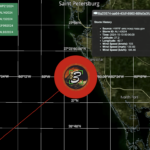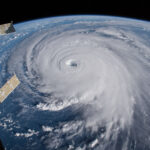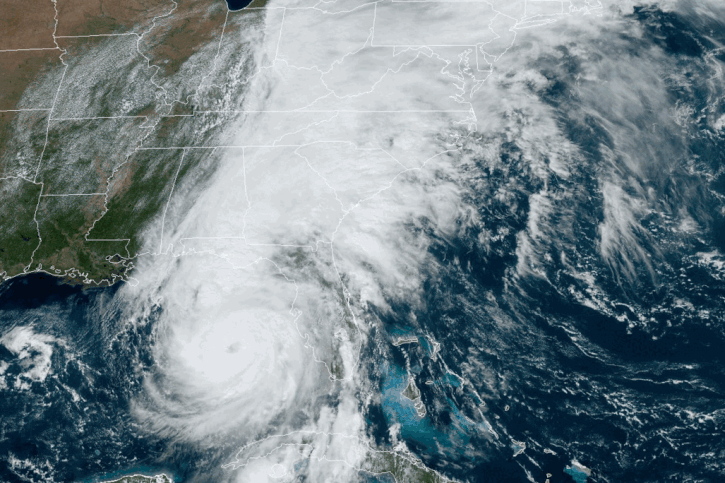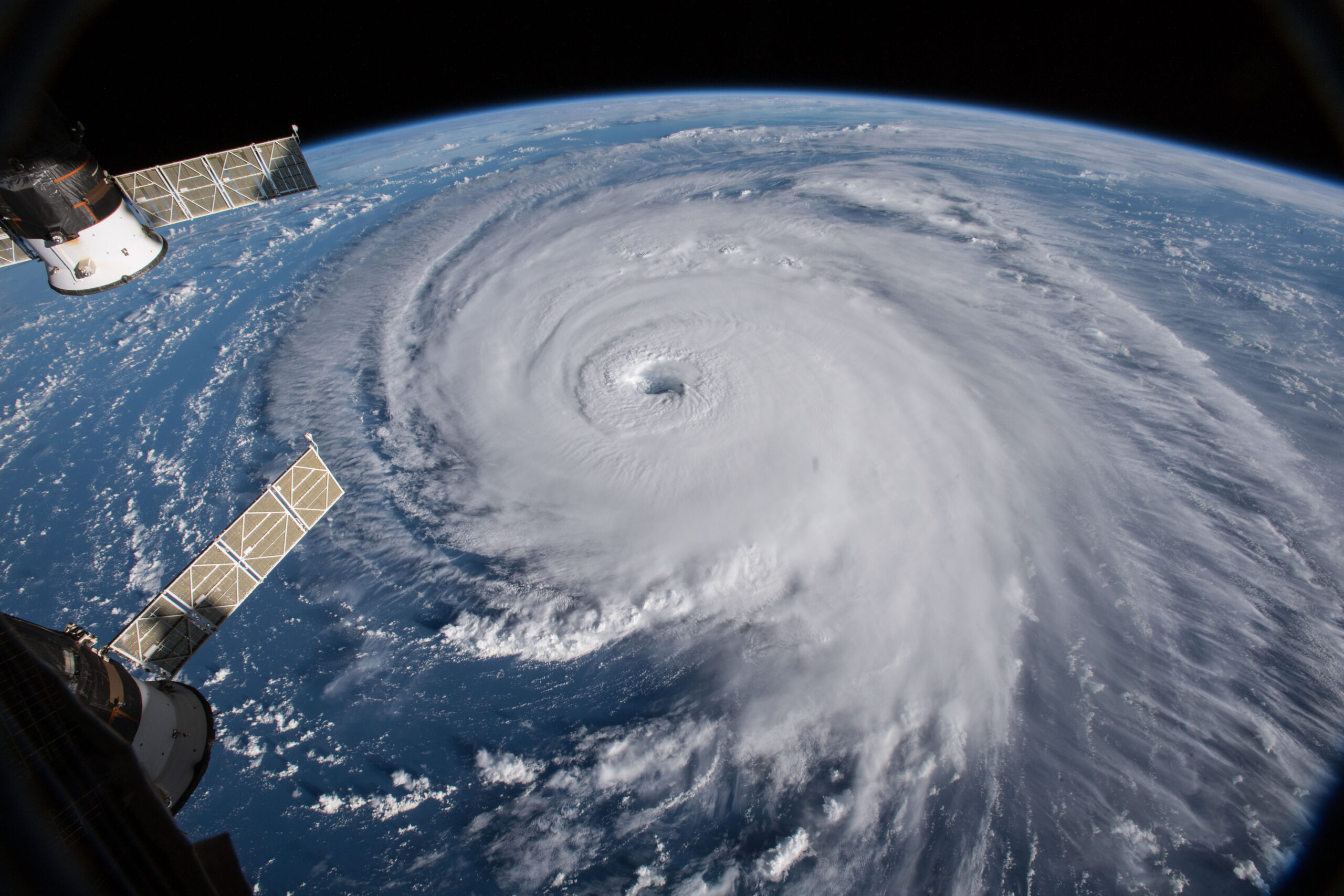
Idalia, a Category 3 hurricane, made landfall with a relentless fury, submerging homes, transforming streets into rivers, and leaving a trail of destruction in its wake. As the Southeastern coastal states grappled with its aftermath, the unique path and sheer power of Hurricane Idalia challenged preconceived notions. They underscored the need for continued research and preparedness in an era of changing climate patterns.
Devastation Unleashed: Hurricane Idalia Strikes Florida’s Gulf Coast
In an influential early morning strike on Wednesday, Hurricane Idalia landed just east of Tallahassee, Florida, at 7:45 a.m. The Category 3 storm left a path of destruction, causing significant damage along many of the Gulf Coast. Florida’s coastal communities grapple with the aftermath of this formidable hurricane.
Effects of the Cyclone
The extent of power outages in Florida is nothing short of staggering, with nearly 3.8 million households and businesses plunged into darkness, accounting for approximately 36 percent of the state’s total.
As the eye of the storm ventured further inland, the powerful onslaught continued. High winds mercilessly tore through the landscape, obliterating signs, propelling sheet metal through the air, and toppling towering trees. Starting at 7:45 a.m., Keaton Beach experienced a major landfall, marking the arrival of Category 3 hurricane, Idalia. The storm charged strong winds of nearly 125 mph (205 kph).
Idalia’s Impact on Florida: A State in Turmoil
As the first light of dawn broke over Florida, the extent of the devastation wrought by Hurricane Idalia became painfully clear. Florida was in a real mess, with destruction all around. Despite the storm’s ferocity, there were no confirmed storm-related deaths as of midday on Wednesday. However, Florida bore the unmistakable scars of Idalia’s relentless rampage.
Governor’s Alarming Address
Florida Governor Ron DeSantis stepped forward to address the state in a news conference, his tone reflective of the gravity of the situation. He voiced concerns regarding the potential storm-related casualties, underscoring the challenges first responders and communities faced. Governor DeSantis’ grave concerns resonated across Florida as the state braced for the aftermath of Idalia’s fury.
Category 2, Unyielding Force
Though downgraded to a Category 2 storm, Idalia showed no signs of relenting. The storm’s powerful winds and never-ending rain hammered Florida, leaving a path of destruction behind. Streets were inundated, transforming into treacherous waterways that disrupted daily life and posed significant safety risks. The resilience of Category 2 Idalia served as a chilling reminder of the destructive power of hurricanes.
Boats Adrift, Communities in Crisis
Boats that were once securely anchored now bobbed helplessly in the storm’s grip. Idalia’s fury affected boats, setting them adrift. They were left at the storm’s mercy. The damage was huge, and communities struggled afterward. They had to start the tough process of recovery and rebuilding.
A Deluge Foretold
The National Hurricane Center’s warning of Idalia’s impending deluge added another concern to Florida’s mounting woes. The forecast of 10 to 20 inches of rain across the Florida panhandle and into parts of Georgia and southeastern South Carolina set the stage for mass power outages. As Idalia continued its path of destruction, power grids faltered under the weight of the storm, plunging communities into darkness and further compounding the challenges faced by residents and authorities.
In the Uncertain Embrace of Idalia
During this meteorological onslaught, Florida found itself in the grip of uncertainty. The true damage remained a mystery, keeping the state and its people in suspense. Florida was in a bit of a pickle as it worked hard to recover, showing the grit and guts of its residents in tough times. In the wake of Idalia’s fury, Florida stood united, ready to rebuild and recover, demonstrating the strength of community and the indomitable human spirit in the face of nature’s most formidable challenges.
The Unprecedented Nature of Hurricane Idalia
Idalia’s impact on Florida was nothing short of remarkable. The hurricane landed in the sparsely populated Big Bend region, where the Florida Panhandle gracefully curves into the peninsula. This unconventional trajectory left meteorologists at the National Weather Service in Tallahassee astounded, leading them to label Idalia as “an unprecedented event.”
What made this distinction even more notable was that no significant hurricanes had ever traversed the bay adjacent to the Big Bend. In hurricane measurement, Idalia’s journey was unusual and left a mark on Florida’s weather history. It was a unique and extraordinary storm, challenging what we thought we knew.
The Strength and Path of Idalia
Idalia’s intensity grew significantly on its journey toward Florida. It started as a Category 2 system on Tuesday and rapidly escalated to a Category 3 storm on Wednesday before peaking as a Category 4 hurricane. It then weakened slightly but remained a potent force.
By late Tuesday night, Idalia had already reached the upper end of Category 2 with sustained winds of 110 miles per hour (177 kph). It was projected to be categorized as an intense Category 4 hurricane, reaching dangerous levels due to the forecasted maximum sustained winds of at least 130 mph (209 kph) upon landfall.
One of the most concerning aspects of Idalia was the wind-driven high tides hitting the coasts of barrier islands and other low-lying areas along the coast. Governor DeSantis told folks in risky areas to follow evacuation orders and head for higher ground. He warned that the storm surge could lead to very dangerous floods.
The Path Forward and Impact on Surrounding States
As of 2 p.m. EDT, Idalia had crossed Florida’s coastline over the Big Bend region and was headed northeast toward Charleston, South Carolina. The National Hurricane Center forecasted that Idalia would become a tropical storm while moving over northeastern South Carolina and North Carolina coasts on Wednesday night and early Thursday.
Flash and river floods were forecasted throughout Georgia and the Carolinas through Thursday, posing significant challenges to affected communities. Tragically, two motorists died in separate rain-related crashes on Wednesday morning.
The Role of Climate Change and Warm Ocean Temperatures
According to NOAA, the region will experience frequent hurricanes, partly because of the rising ocean temperatures. The meteorological department and rescue team will be far busier in 2023 than initially predicted.
The revelation that this hurricane season was projected to be significantly more active than initially forecast is partly attributed to the rising temperatures of our oceans. This declaration underscored the mounting connection between climate change and hurricanes’ heightened frequency and intensity.
As our planet’s climate keeps shifting, the oceans are heating up, especially in the tropics. These elevated ocean temperatures provide the ideal fuel for hurricanes, enabling them to gather strength and intensify rapidly.
The 2023 hurricane season, which extends until November 30, has August and September as its traditional peak months, further exacerbating the concerns of meteorologists and climate scientists.
Insurance and Economic Implications
Hurricane Idalia’s devastating impact extends beyond the immediate destruction it wrought on communities. The economic repercussions are staggering, and UBS bank’s estimates cast a grim shadow over the financial landscape. Their calculations reveal average insured losses of $9.36 billion in Florida alone, signifying the immense financial toll on the state.
However, the bleak picture doesn’t end there. The probability of losses exceeding $4.05 billion stands at a sobering 50%, highlighting the precarious financial position many insurers and policyholders find themselves in.
There’s a problematic 10% potential that losses could balloon to a startling $25.6 billion, negatively affecting the state’s economy and citizens.
Based on data as of August 28, these forecasts highlight the unpredictability of a hurricane’s economic aftermath. These highlight how crucial it is to have thorough plans and quick reactions in place to ease the financial strain on people and communities dealing with the aftermath of big disasters.
Wrapping up
As we reflect on the relentless force of Hurricane Idalia, it becomes clear that our understanding of weather phenomena and their consequences is of utmost importance. At fluids.ai, we remain committed to providing the public with accurate and unbiased weather information, helping communities prepare for and respond to such natural disasters.
In the aftermath of Idalia’s devastating impact, more than ever, it is evident that the work of organizations like fluids.ai is vital in ensuring that the public remains informed and empowered in the face of meteorological marvels like Hurricane Idalia.
Hurricane Idalia reminds us of the importance of ongoing research, readiness, and taking action to face the increasing challenges brought by extreme weather in our changing climate. It’s a call to be prepared.











